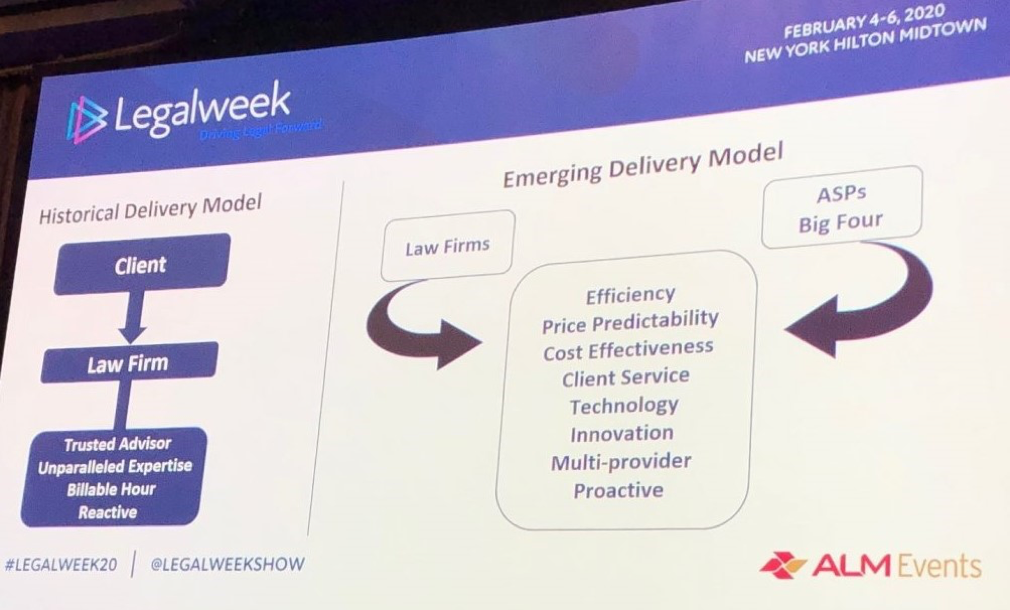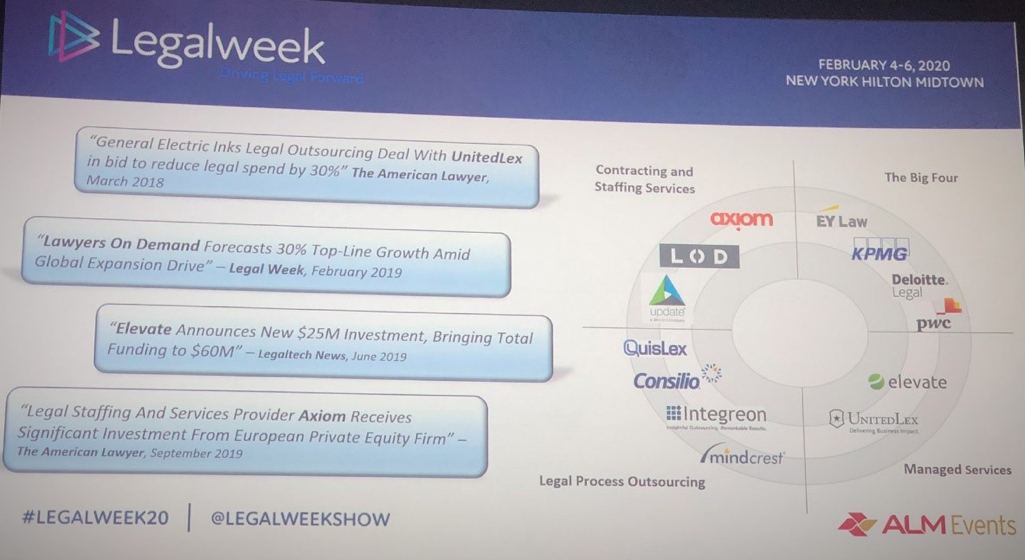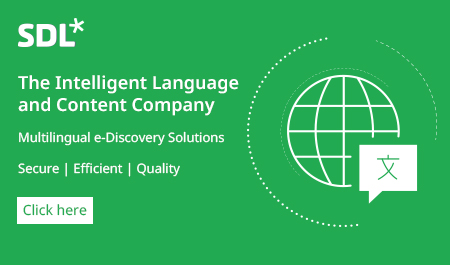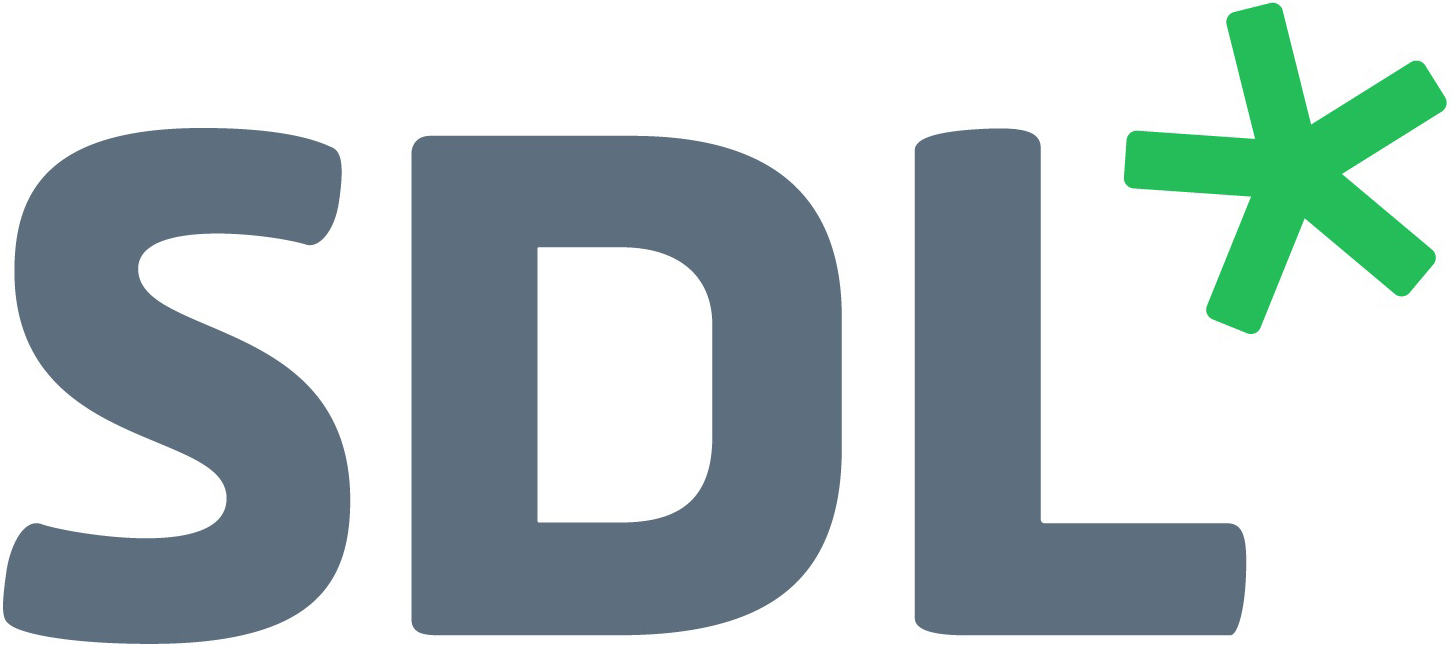 By Kirti Vashee*, SDL
By Kirti Vashee*, SDL
SDL has been witnessing a dramatic, largely digitally-driven business transformation, affecting many industries over the last decade. The term most often used to describe this phenomenon is “digital transformation,” even though non-digital business structural changes typically accompany it. Digitization and datafication are key elements in this transformation. We have seen the impact of this phenomenon most clearly in the retail industry, where giants of yesteryear like Sears and Borders have fallen to more digitally agile contenders like Amazon, who has fundamentally changed the retail landscape. The impact of digital transformation on the legal profession has been less dramatic, but after spending a week at LegalWeek20 in New York City in February, it is clear that change is coming to the enterprise-focused legal profession as well.
The emerging changes in the legal industry can be characterized in the following five ways:
- The changing relationship between corporate general counsel and outside counsel
- The changing legal services model
- The growing impact of the data deluge
- The evolving legal technology landscape
- The increasing importance of data security and privacy
The growing tension and disconnect between corporate general counsel and outside law firms
Experts suggest that the disruptive changes in the legal industry began after the 2008 downturn when companies started demanding more from their outside counsel. Today’s law firms find themselves under greater pressure from clients who demand value, efficiency and transparency in a way that was uncommon ten years ago. The past decade has seen General Counsels (GCs), demanding more for less, but it has also seen a growing awareness that return on investment (ROI) is more important than straightforward cost.
The shift that began a decade ago also introduced the gradual death of the traditional approach to legal billing, the venerated billable hour. Previously, outside counsel time was literally equivalent to money. Lawyers had little incentive to be more efficient and saw no reason to spend non-billable time exploring and deploying new technologies to make themselves more efficient. This traditional approach is changing now, as firms can no longer rely solely on their legal expertise; today, they must also focus on how they deliver that expertise, which calls for better use of technology and benefits early adopters of disruptive technologies. Legal services have been a buyers’ market for the past decade, and corporate law departments now like to see clearly defined value and efficiency.
All this is happening against a backdrop of changing buyer behaviors accelerated by rapid globalization across the whole professional services market. The corporate legal department has historically often been viewed as “deal killers,” but the modern legal department is now a much more engaged internal business partner in emerging corporate initiatives. Modern legal departments have gradually been shifting their approach to manage the specific changes created by digitalization — today, corporate legal counsel engages with more stakeholders, interacts with more speed and iteration, are accustomed to the increased technical and collaborative nature of digital work, in addition to handling new information-related risks. The increasingly technologically-aware workforce is upping its expectations in terms of the use of technology and effective, rapid communication between service providers and clients.

Technology is changing the general counsel’s role and law firms need to react to remain competitive. The time has come to embrace emerging technologies that provide clients with efficient solutions to manage and service their current and future needs. Client expectations are changing, technology is having a growing impact and new, low-cost legal service competitors are emerging to take a slice of the market. What was already a buyer’s market is becoming more so, with ever more powerful in-house legal departments stoking the market for alternative legal service providers (ALSPs).
Some GCs and consultants have even developed tests to measure their outside law firms on how efficiently they perform with commonly used productivity tools and measure competence with widely used technology. These tests reward efficiency, which goes against the yardstick that old-style lawyers have traditionally used to measure the value of their work: time. Firms whose working cultures do not evolve to efficiently service current market needs are likely an endangered species. Law firms need to deliver better quality service, and they need to do it cheaper and faster, which demands more automation and competence with technology. Clients are now much less tolerant of old-style lawyers who resist or refuse to use technology that enables expedited and efficient work production.
In his book “The End of Lawyers?” author and legal tech expert Richard Susskind writes: “It is not easy to convince a group of millionaires [Old Partners at Law Firms]… that their business model is wrong.”
Law departments are now at what Judith Flournoy, CIO at international law firm Kelley Drye & Warren, terms “an inflection point,” where they are likely to have to accelerate their uptake of technological innovations to stay competitive. Competence with analytics, collaboration and office productivity software is increasingly a base requirement for the client today.
The changing legal services market
As the needs of GCs change, we see corporate law departments are in-sourcing more legal work, employing more tools and technology to reduce the need for outside counsel and using more boutique law firms and quasi legal-service providers (Alternate Legal Service Providers – ALSP).
The traditional structure of partners effectively running the business with some carefully supervised and limited support services is outdated today. The general counsel today can not only shift to another law firm, but could also work with small specialist boutique law firms and global accounting firms who are becoming more involved with legal services. Smaller firms tend to be much more innovative, specialized, tech-savvy and run leaner practices enabled by technology; and thus are often more competitive than large firms. The growing importance and practice of technology-enabled collaboration allow these new service providers to deliver much more integrated, efficient services resulting in deeper client relationships.

The 2017 Litera Report on the State of the Legal Market says: “The potential impact of the Big Four accounting firms on the future market for law firm services cannot be overstated [for firms in jurisdictions where alternative business structures are permitted]. As the ALSP market evolves, the Big Four are likely to play an ever-expanding role.” The Alternative Legal Service Providers market revenue grew from $8.4 billion in 2015 to about $10.7 billion in 2017 and continues to grow rapidly.
ALSPs perform many of the tasks traditionally done by law firms, with the top five tasks identified in a Thomson Reuters survey as:
- Litigation and Investigation Support
- Legal Research
- Document Review
- eDiscovery
- Regulatory Risk and Compliance
Ron Friedmann, a partner at Fireman & Company, a legal industry-focused management consulting firm, believes firms need to leverage an ecosystem of players. He says many future lawyers will not be lawyers at all. According to Friedmann, “In ten to fifteen years, law firms will be a much smaller share of the total legal market.”
The ongoing data explosion
The volume and complexity of data have always been a part of the legal industry landscape. What is changing is the deluge of data is coming at ever-increasing speeds, variety and formats and is also more often global and multilingual. The impact of this data explosion is significant and most legal teams will admit this rise in content is a major challenge facing the legal profession today.
In eDiscovery settings, this also means that the information triage process is more challenging, requires much more automation to handle data volume and variety and increased capabilities for managing multilingual data.
Today’s enterprises are now rapidly and naturally global, and thus the modern legal department and outside counsel need to be able to process content and information flows in multiple languages regularly. The variety and volumes of multilingual content that legal professionals need to process and monitor can include any of the following:
- International contract negotiations and disputes
- Patent-infringement litigation
- Human Resource communications in global enterprises
- Customer communications
- GDPR compliance-related monitoring and analysis
- Cross-border regulatory compliance monitoring
- FCPA compliance monitoring
Amounts of multilingual content can vary greatly, from very large volumes that might involve terabytes of documents in litigation-related eDiscovery, to specialized monitoring of customer communications to ensure regulatory compliance, to smaller volumes of sensitive communications with global employees. Multilingual issues are especially present in cross-border partnerships and business dealings, which are now common in many industries. Being able to process and analyze large volumes of multilingual data is quickly becoming an important requirement.
The emerging legal technology landscape
Law firms can help general counsel drive efficiencies in business decisions by working together to determine what technology is most beneficial. Firms need to start adopting a collaborative teamwork approach not only with general counsel but also by cooperating with alternative service providers and the Big Four. The general counsel is also looking for outside counsel to adopt a more client-centric model.
As automation penetrates more deeply into legal practices, we see the role of technology growing in scope and breadth. Tools can range from a variety of analytics and collaboration tools to structured document management tools, end-to-end litigation and eDiscovery platforms. More recently, comprehensive information governance tools are emerging to handle the increasing datafication of the modern enterprise and manage the emerging compliance risks involved in conducting business with a growing digital footprint.
Rather than simply upgrading existing technologies, true transformation only comes when law firms adopt a robust IT strategy that overhauls their services completely. Automation also only makes sense if it delivers on providing high-quality work more efficiently and predictable value to the client.
“After all if you’re paying for a service and one supplier says, ‘that will take two weeks, and we’ll charge you by the hour,’ and another says, ‘that will take us two days, and we’ll charge a fixed fee’—which would you choose?”
Legaltech, notes Richard Tromans, founder of Tromans Consulting, is a “very wide spectrum.” At one end, document assembly and robotic process automation take the grind out of standard, repetitive work while reducing the time taken to perform tasks, saving costs, removing errors and improving compliance. This kind of automation falls into the category of optimization. At the other end is natural language processing, artificial intelligence and virtual assistants, which offer the possibility of really revolutionizing the future of legal services — and opens the door to the prospect of robot lawyers.
As data volumes climb, tools that help lawyers extract relevance and identify core patterns become more and more important. The legal technology community needs to move beyond making vague claims of being AI-based to showing clearly how machine learning and data-driven algorithms can assist in delivering higher value to an expanding variety of legal tasks and processes.
The increasing importance of data security and privacy
Data security involves both preventing malicious attacks and limiting accidental data loss. However, the distributed nature of technology, enhanced by cloud services, creates vulnerability with employees working from remote locations more frequently, making it harder to secure data.
As DLA Piper partner and former US Department of Justice cybercrime coordinator Ed McAndrew observed, “The best evidence is now held in mobile devices and the apps, social networks and cloud services we utilize with those devices. Any investigator or litigator who ignores that evidence may be committing malpractice in many instances.”
Recent surveys by Gartner suggest that legal leaders have to start investing in digital skills and capabilities, reflecting the evolving role of the legal department as a strategic business partner. “How legal departments build capabilities to govern risk within digital initiatives matters more than the legal advice they provide,” says Christina Hertzler, Practice Vice President, Gartner.
Striking a reasonable balance between security and convenience is a challenge faced by all law firms. As organizations change the way they operate, generate revenue and create value for their customers, new compliance risks are emerging — presenting a challenge to compliance oversight, which must identify, assess and mitigate risks like those tied to fundamentally new technologies (e.g., artificial intelligence) and processes.
GDPR, CCPA and other privacy protection regulations will present special challenges for the modern enterprise. Thus, while digital transformation initiatives require active data harvesting to enable better personalization, this data acquisition effort also needs to respect the privacy rights of consumers and customers who may or may not be aware of the extent of the data collection activities. Debbie Reynolds noted the information governance requirements of these regulations at LegalWeek recently. “The new reality is that navigating the data privacy rights of individuals everywhere will be an operational necessity for businesses to thrive in the digital age,” she said.
Legal professionals will need to play a larger role in managing these new risks, which can be devastating and cost millions in reparations and negative consequences. Increasingly, these threats originate in foreign countries and are sometimes even supported by foreign governments.
Apart from the compliance risks that clients face, law firms themselves are sought-after targets as repositories of privileged data. Law firms are a top target among hackers because of the extensive high-value client information they possess. Hackers understand that law firms are a “one-stop-shop” for sensitive and proprietary corporate information, merger & acquisitions data and emerging intellectual property information.
Lawyers are failing on cybersecurity, according to the American Bar Association Legal Technology Resource Center’s ABA TechReport 2019. “The lack of effort on security has become a major cause for concern in the profession.”
As more rapidly flowing multilingual data becomes the norm in global enterprises, new data security risks emerge as employees start using public machine translation to translate privileged business content. The risk is high because publicly available tools are essentially frictionless and require little “buy-in” from users who don’t understand the data leakage implications as they pass privileged content through these systems. The rapid rise in globalization has resulted in a substantial and ever-growing volume of multilingual information that needs to be translated instantly as a part of ongoing business practice. Multilingual data will become much more pervasive in the coming years as the forces of globalization march onwards.
About SDL:
End-to-end translation solutions for the legal industry
SDL provides technology solutions and human expertise around intelligent enterprise content management and intelligent translation capabilities for a broad range of global industries. Thus, we see today that language translation production capabilities are vital for the modern global enterprise and translation needs can range from rapid translation of millions of documents in an eDiscovery scenario to very careful and specialized translation of critical contract and court-ready documentation.
To find out how SDL can support your multilingual eDiscovery-related data processing and translation strategy, please visit our multilingual eDiscovery pages, which provide more insight on what we can do for you. To find out more about the Relativity end-to-end translation solutions capabilities look here or watch this short video to learn how SDL can help.
W: https://www.sdl.com/products-and-solutions/translation/sdl-translation-management
*About the author:
Kirti Vashee is a language technology evangelist at SDL who was formerly an independent consultant focusing on machine translation (MT) and translation technology.











 SDL
SDL Christy Ma
Christy Ma Bertram Chen
Bertram Chen






